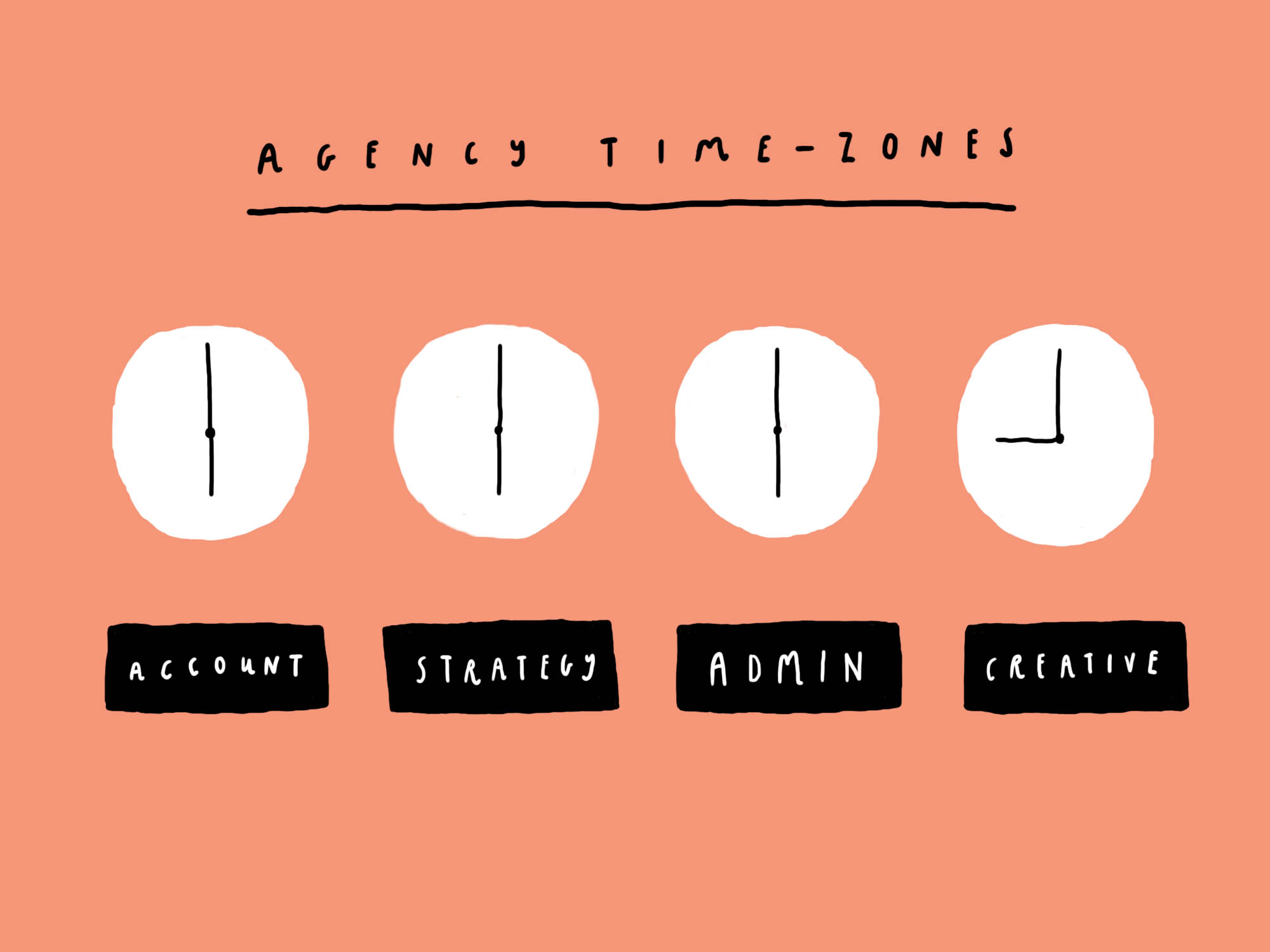Sustainable working in the creative industry: An impossible myth?
How many hours did you work today? Ten? Twelve? More? And last weekend? How many then? As a designer, you’ve been always felt privileged that you get to do something you love, day in, day out. You don’t mind doing long hours, in fact you often wear them as a badge of pride. Working 15 hour days, missing your kid’s birthday, missing yet another wedding anniversary because of a pitch become almost legendary office tales that you proudly regale to your coworkers. In this industry, there’s no such thing as work / life balance — after all, if you’re a great designer, long hours come with the territory, right?
Late nights and weekend work have always been part and parcel of a career in the creative industry. And as with any job, the occasional late night before a big deadline is to be expected. But, if you’re working three, four, five late nights every single week then one has to wonder if this practice is truly the best way to work, or if somewhere along the line things have gone wrong.
Things are showing signs of changing for the better. In the digital age, where the brief is less about “How do we convince people to buy our shit?”, and more “What value can we bring to our user’s lives?”, the line between marketing and product design is becoming increasingly blurred. As such, the agency model is slowly moving towards long term partnerships with clients, where team setups are more akin to inhouse product design teams. Long term equals less staff turnover, more sustainable practices and generally being less of a dick to people.
Despite signs of a shift in attitudes, old habits die hard. Unsustainable work practices are still commonplace in designer agencies resulting in burnout, high staff turnover and ultimately poorer work. Over hours worked by designers are rarely billed to clients, so the value of the design work is greatly diminished. When you work in an environment like this neither you, the agency, the client or the work itself benefits.
Through a number of interviews with leading design professionals from around the world, this series explores the simple question: “Can a successful design agency maintain a work / life balance?”. Is this a naive undertaking in an industry is not known for sustainable work practices? And even if long hours can be avoided on the agency side, how can a company that doesn’t work long hours maintain a competitive advantage over those that do, how can they get clients on board and, most crucially, can they still produce great work?
